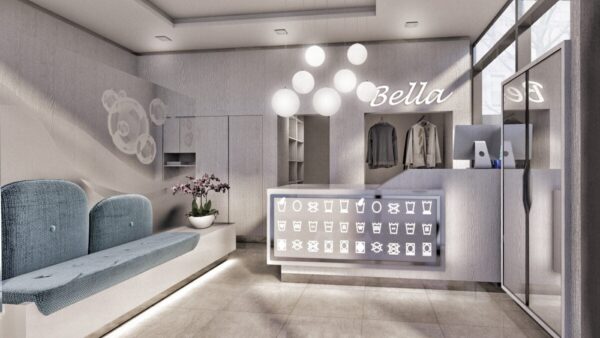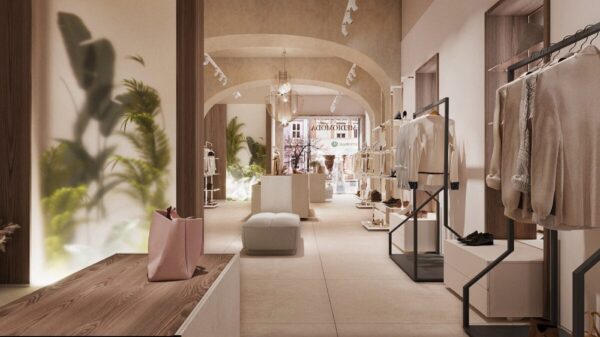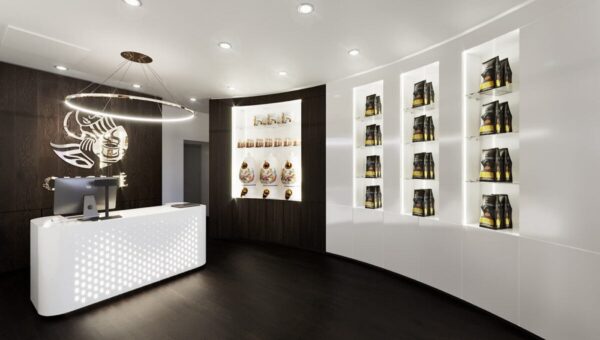How do colors shape your retail space? Have you ever thought that the arrangement of shelves and the choice of lighting serve only the customers, with colors being just an aesthetic addition? Unfortunately, that’s not accurate. Studies indicate that 62% to 90% of the first impressions of a store are formed based on the prevailing colors – and we already know how crucial the first impression is. Colors not only increase brand recognition by an incredible 80% but also ensure that customers associate your company wherever they see the same color. Colorful ads are read up to 42% more than black and white ones. Certain colors have the power to keep customers in the store, prompt quick decisions, and influence their mood. So, are you still considering colors as something optional?
Although perspectives on specific colors vary from culture to culture and depend on individual experiences, there are universal characteristics of colors that we commonly observe. In the following article, we will present to you the most important guidelines for using colors in the interior of your retail space. Keep in mind that these guidelines apply not only to walls but also to storefronts, shelves, advertising space, and even price tags and bags used for packing purchased items.
Red
This color is a magnet for attention, accelerates customers’ heart rate, and stimulates impulsive buying decisions. It reduces analytical thinking, speeds up decision-making, and also increases appetite, which is why it is often present in fast-food and confectionary stores. Customers are more likely to stop by products marked with red, making it a regular choice for labeling items on sale.
Green
Linked to nature, green is often used in stores offering organic and eco-friendly products. It is a universal color that attracts both male and female customers.
Blue
The color of trust and security, blue is a common choice in financial institutions. It evokes the sky and ocean, summoning a sense of peace and relaxation. Interestingly, with blue walls (darker below, lighter above), a space can appear less noisy. it is practical for stores targeting both male and female audiences.

Orange
Motivates, representing the color of energy and enthusiasm. An excellent choice for sports equipment and supplements stores, as well as gyms.
Pink
Bearer of happiness, romance, and peace, it emerged as a symbol of femininity after World War II. Often used for specific products and gifts for women, especially when combined with other pastel tones.

Black
This is a color symbolizing authority and strength, dominating electronics stores and men’s boutiques. In smaller quantities, it can effectively draw attention to specific products, whether they are on sale or represent luxurious novelties.
If aiming for impulsive purchases, consider royal blue, black, or shades between red and pink. For budget-conscious customers, navy blue or turquoise are excellent choices. Wall colors can even influence the perception of temperature in a space. Research shows that warm colors like orange, yellow, and red make customers feel warmer than it is. On the other hand, green, blue, and light purple have a refreshing effect.
Adapt the color to your target audience: opt for vibrant colors if your target group consists mainly of younger customers, and choose subtler tones if targeting an older audience. Dark colors are acceptable for larger spaces but use them cautiously in smaller shops. Striking colors should be moderate so as not to overwhelm the space and distract attention from the products. It’s essential to align your brand, spatial geometry, and the store’s theme. For instance, if the theme is a beach vacation, choose shades of the sky, sea, and sand to create a relaxing atmosphere.

In this series of blogs, we’ve aimed to acquaint you with the basics of retail space design, but each space tells its own story. If you want to entrust the design of your retail space to professionals, contact us. We’ll be happy to discuss your desires and needs to create a space that best conveys your business’s story.
If you missed our previous blog on how to provide an unforgettable shopping experience for your customers, you can read it HERE.










